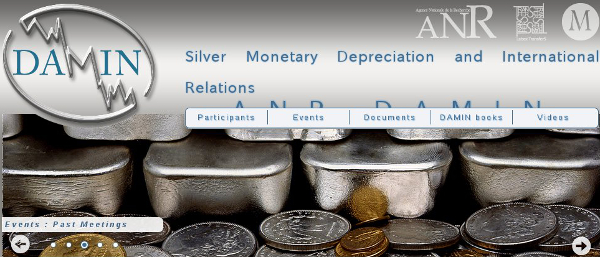Professor Georges Depeyrot, who stays at IASA as visiting fellow, will give a talk on his research topic. All who are interested in the topic are welcome.
Speaker: Geroges Depeyrot (Visiting Fellow at IASA, Directeur de recherche, Ecole Normale Superieure, France)
Topic: The DAMIN program and the problem of gold and silver between USA, Europe and Asia (c.1860-1900)
DAte: 16:00-17:30, Thursday 10 July 2014
Venue: Meeting room No.1, IASA, The University of Tokyo
Abstract
At the beginning of the 19th century, the monetary systems were composed of gold and silver coins, linked by a stable relation, based on the relative commercial value of the two metals (1 g of gold = 15.5 g of silver). If the value of one metal increased or decreased, the relation between the coins was affected. To avoid the difficulty, Great Britain adopted a monetary system based on gold in 1821. In the middle of the century, the gold rush and the arrival of large quantities of gold disturbed the monetary system and decreased the value of gold. However, several countries maintained a bi-metallic system (gold and silver). In 1865, several countries created the Latin Monetary Union in order to construct an international monetary union giving legal tender to the coins of each participant. It was the prototype of the actual euro. The exploitation of new silver mines in the 1860\’s produced immense quantities of silver. Several solutions were imagined by the International Monetary Conferences to stabilize the monetary system. One of these was the transfers of silver in Asia to monetize China and Japan. Systematically, all the countries adopted the monometallic system, including Japan in 1897.
The DAMIN program analyses the monetary crisis that ended the monometallic system and the first real monetary union. Details, PDFs, videos, on www.anr-damin.net

